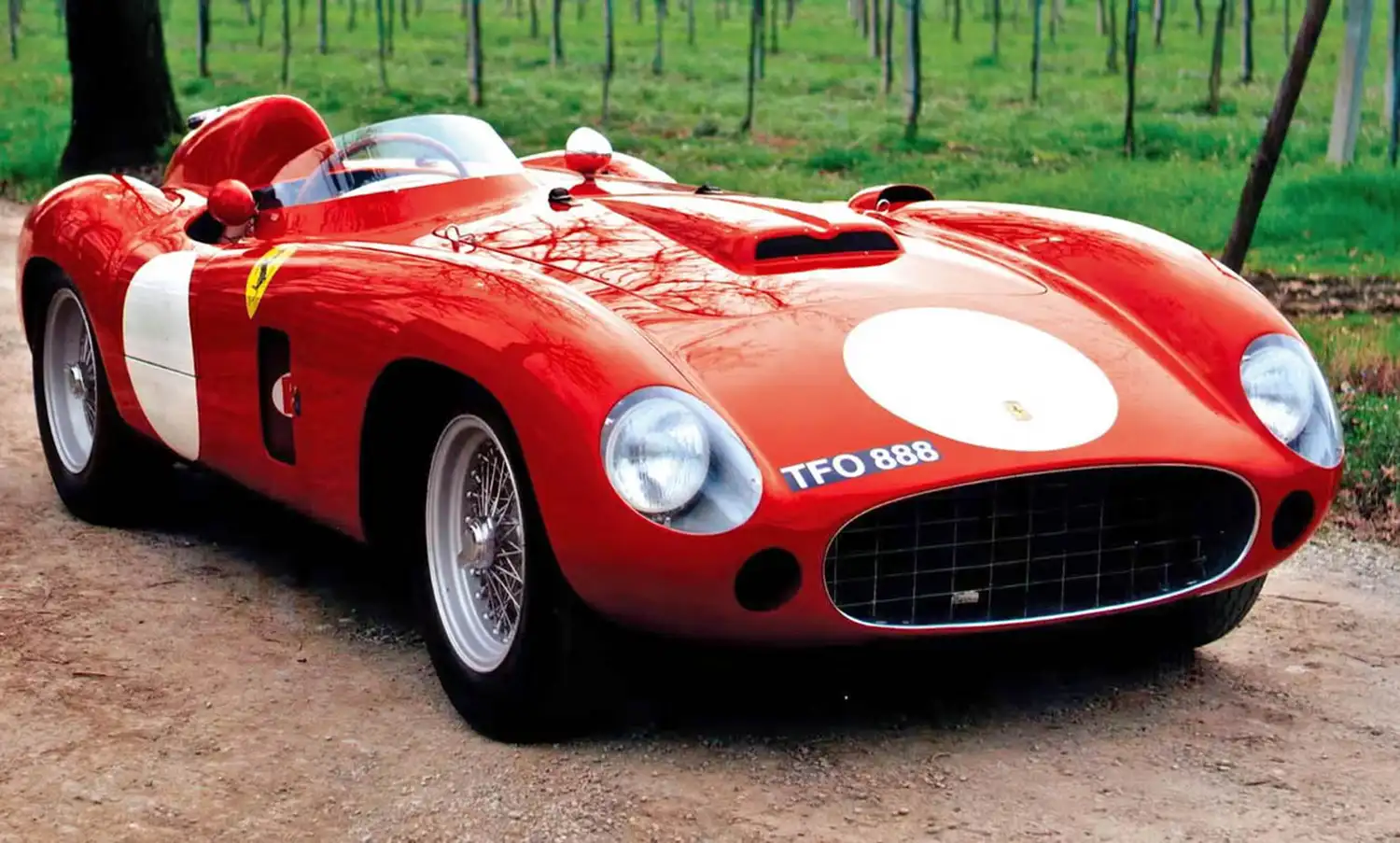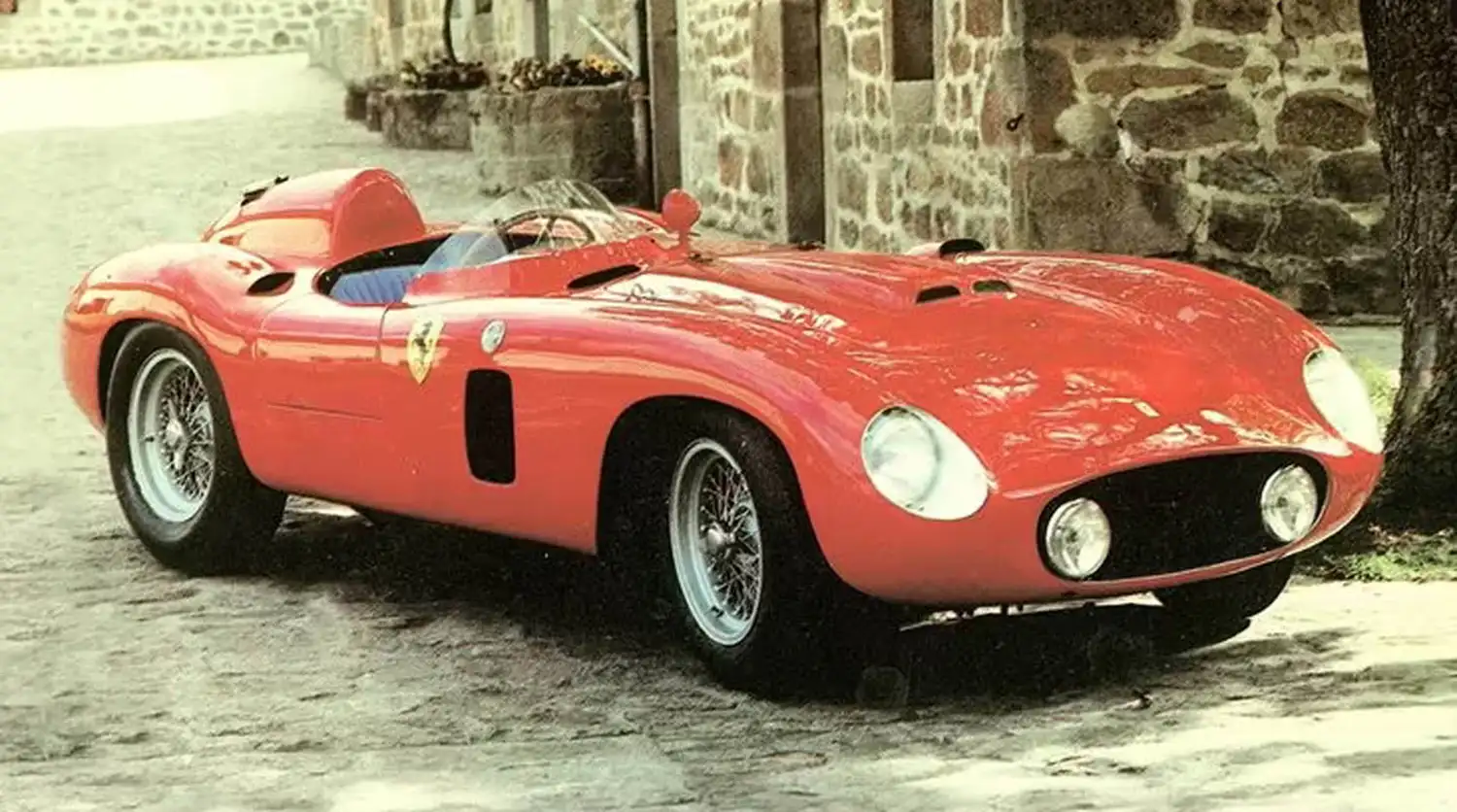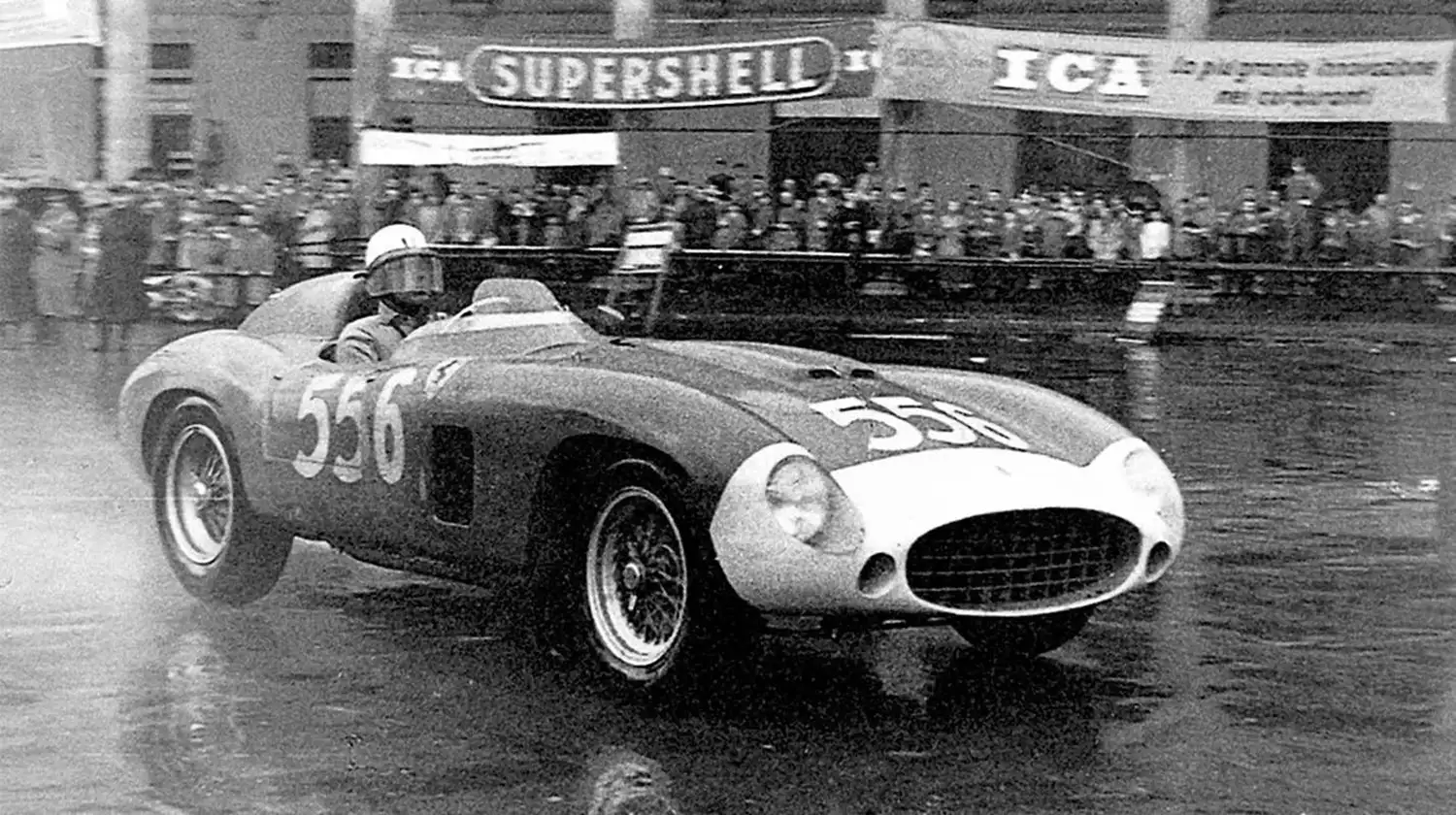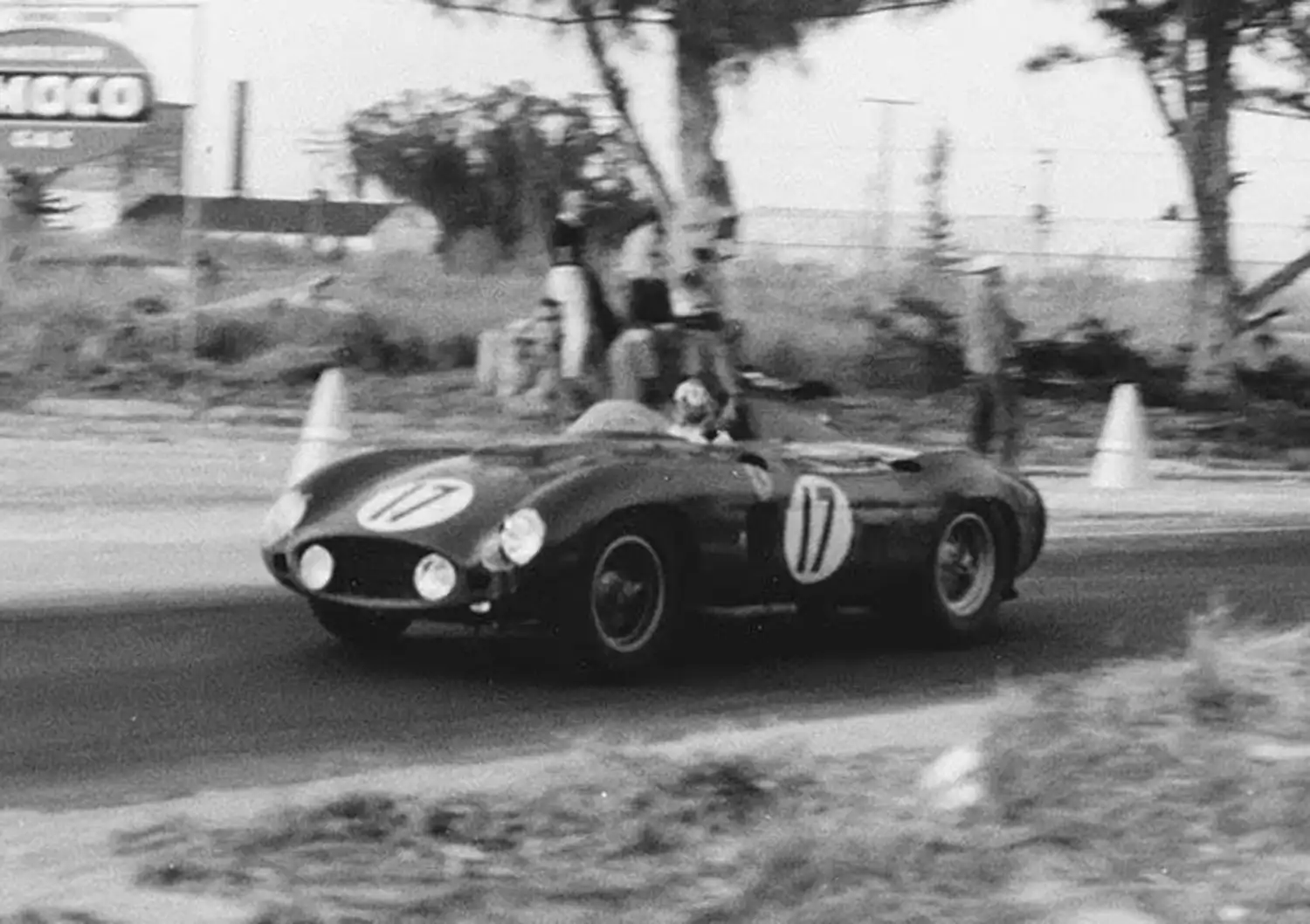
The Ferrari 860 Monza, an iconic race car from the mid-1950s, represents a significant chapter in Ferrari’s illustrious history. Introduced in 1956, the 860 Monza was developed as an evolution of the successful 750 Monza, featuring a larger displacement engine that showcased Ferrari’s engineering prowess. This model marked the peak of Ferrari’s four-cylinder engine era, just before the company transitioned back to the V12 engines that would dominate its future in motorsport and production vehicles.
A Racing Evolution
The 860 Monza was introduced with a 3,431 cc four-cylinder engine, which was a marked improvement over its predecessor. Its debut at the Tourist Trophy was relatively quiet, but the car quickly made a name for itself when Phil Hill drove it to victory at Nassau. The enhanced version of the 860 Monza, driven by Collins and Musso, secured second and third places at the Mille Miglia, following closely behind the new 290 MM. This marked the culmination of Ferrari’s four-cylinder era and set the stage for the return to V12 engines.

Engineering Excellence
The Ferrari 860 Monza’s engine was a front, longitudinal in-line four, boasting a bore/stroke of 102 x 105 mm and a unitary displacement of 857.98 cc. With a total displacement of 3,431.93 cc and a compression ratio of 8.5:1, the engine delivered a maximum power of 206 kW (280 hp) at 6,000 rpm, achieving a power per litre of 82 hp/l. Fuel was delivered through two Weber 58 DCOA/3 carburettors, and the ignition system featured two spark plugs per cylinder with two coils.
Chassis and Suspension
The 860 Monza featured a tubular steel frame and a sophisticated suspension system. The front suspension was independent, with unequal-length wishbones, coil springs, and telescopic shock absorbers. The rear suspension was a de Dion setup with twin radius arms, a transverse leaf spring, and telescopic shock absorbers. Braking was provided by drum brakes, and the car had a four-speed transmission plus reverse.
Design and Performance
The 860 Monza’s bodywork was a two-seater spider configuration, designed for optimal performance and aerodynamics. It had a wheelbase of 2,350 mm, a front track of 1,296 mm, and a rear track of 1,310 mm. The car’s dry weight was 860 kg, allowing it to achieve a top speed of 260 km/h.

Specifications
Engine:
- Type: Front, longitudinal in-line four
- Bore/Stroke: 102 x 105 mm
- Unitary Displacement: 857.98 cc
- Total Displacement: 3,431.93 cc
- Compression Ratio: 8.5:1
- Maximum Power: 206 kW (280 hp) at 6,000 rpm
- Power per Litre: 82 hp/l
- Fuel Feed: Two Weber 58 DCOA/3 carburettors
- Ignition: Two spark plugs per cylinder, two coils
- Lubrication: Dry sump
- Clutch: Multi-plate
Chassis:
- Frame: Tubular steel
- Front Suspension: Independent, unequal-length wishbones, coil springs, telescopic shock absorbers
- Rear Suspension: De Dion, twin radius arms, transverse leaf spring, telescopic shock absorbers
- Brakes: Drums
- Transmission: 4-speed + reverse
- Steering: Worm and sector
- Fuel Tank Capacity: 160 litres
Tyres:
- Front: 6.00 x 16
- Rear: 7.00 x 16
Bodywork:
- Type: Two-seater spider
- Wheelbase: 2,350 mm
- Front Track: 1,296 mm
- Rear Track: 1,310 mm
- Weight: 860 kg (dry)
Performance:
- Top Speed: 260 km/h
The Ferrari 860 Monza remains a testament to Ferrari’s innovative spirit and engineering excellence. Its legacy continues to inspire automotive enthusiasts and racers alike, celebrating a time when Ferrari’s four-cylinder engines roared to victory on the track.
